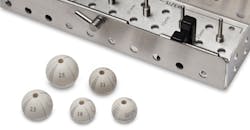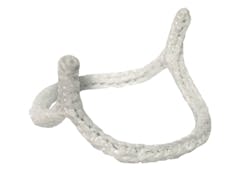Polymer Used for Reusable Tool that Sizes Patients’ Aortic Valves
Biomedical engineers at BioStable Science & Engineering needed to choose a material for making a sizing device—one to be included in the HAART 300 aortic annuloplasty surgical kit for repairing aortic valves.
The kit is aimed at helping patients who suffer from aortic insufficiency, a condition in which blood flows backward into the heart because the shape of the aortic valve is distorted, preventing the valve leaflets from closing properly. The HAART 300 lets surgeons to reshape and stabilize the valve’s base to restore normal valve function and avoid valve replacement.
The HAART 200 Aortic Annuloplasty Device is designed to facilitate valve repair in patients with aortic valve insufficiency due to BAV. The device is intended to reduce annular diameter based upon the valve’s leaflet size, conforming the annulus to a circular, symmetric shape for improved valve function, as well as to act as a support to stabilize the annular geometry as it heals, and then over long-term.
The device looks like a macrame bracelet, but it is shape replicates the base of the aortic valve. The kit contains several different sizes of this implant and doctors must side the patient’s valve to get the right one.
To ensure the surgeons use a correctly sided HAART 300, they first measure the size of the valve’s three leaflets—a tricky three-dimensional task that must be done quickly and safely. BioStable designers came up with a reusable series of spheres with various sizing marks on their surfaces.
They decided to machine the spheres out of extruded rod stock of Solvay’s biocompatible Polyphenylsulfone (PPSU) polymer, Radel-5500. This polymer has a proven record in health care applications. It withstands repeated sterilization cycles, is strong, and can be machined easily. The polymer’s thermal and dimensional stability, together with is resistance to chemicals and non-absorption of water, make it a good choice for parts that will require repeated disinfections and steam sterilization. Radel parts will survive 1,000 autoclave cycles without losing mechanical properties.


